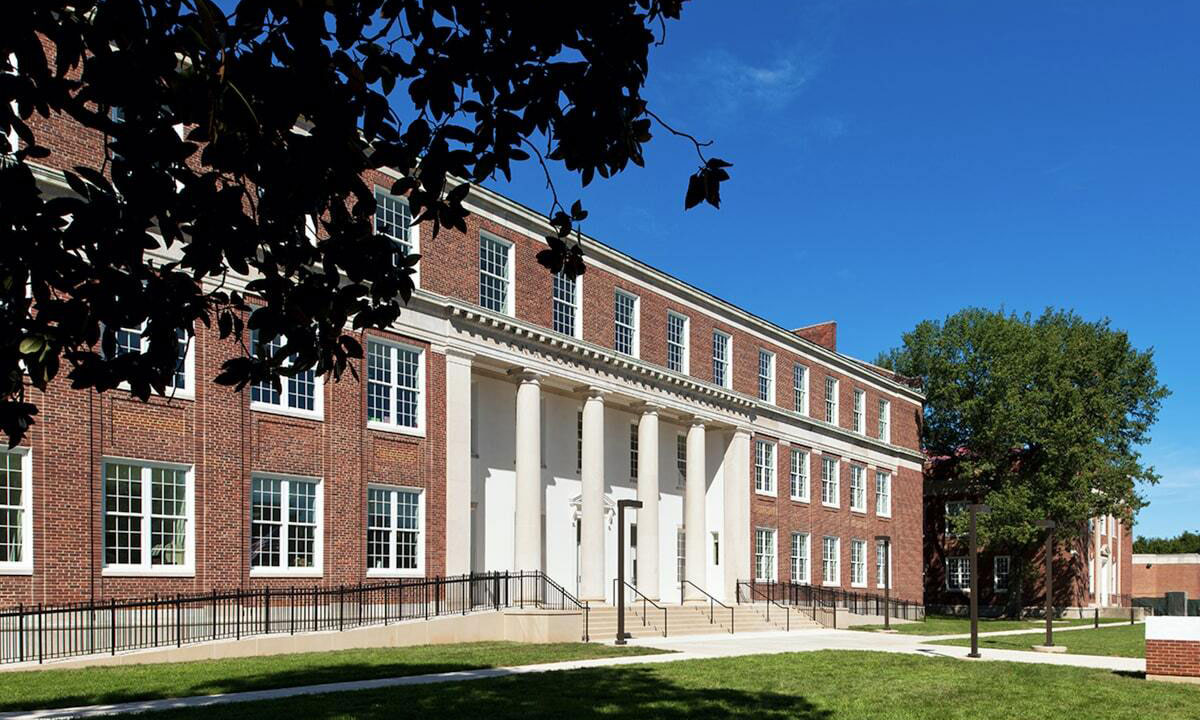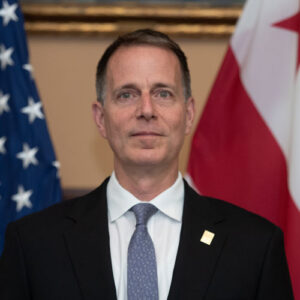How Washington, D.C., Is Reimagining High School to Help All Students Succeed
Kihn: The world is changing. Education must, too. Limiting the opportunities of students simply because of the HS they attend is a relic of the past.

Get stories like this delivered straight to your inbox. Sign up for The 74 Newsletter
It’s a familiar back-to-school season in Washington, D.C., but the campuses that high schoolers are returning to will never be the same. They are transforming into reimagined hubs that offer flexible and personalized paths for all students. Across the District, young people are no longer confined to the geography of their schools, as the now-artificial lines among high school, college and career are blurred. That’s a good thing for students — and for schools, which can shed the artifice of being all things to all people.
One aspect of this new landscape is a state-of-the-art Advanced Technical Center in D.C.’s Eckington neighborhood, where students from a dozen high schools are studying an in-demand field such as cybersecurity and general nursing. Their classes are taught by college professors from Trinity Washington University or the University of the District of Columbia, carry college credit and build toward industry-recognized credentials. The curriculum has been designed with industry leaders like hospitals and informational technology firms—places that are looking to hire employees with the exact skills being taught.
Another factor is how students are engaging in both in-person core classes and hybrid courses at their home schools, with live virtual instructors supported by on-site learning coaches. This model, which can enroll students from multiple schools in one class, takes lessons learned in high-quality virtual instruction from the pandemic and allows students to access engaging electives not offered at their home school, such as Advanced Placement psychology, American Sign Language and animation.
Further adding to the custom high school experience, some students then spend their afternoons participating in paid internships and honing career skills that will be valuable in growing fields — all while earning more credit toward graduation.
For young people who haven’t yet reached ninth grade, the District has begun to establish and strengthen the pathway from middle school through college and other postsecondary opportunities. Career exploration courses for sixth-, seventh-, and eighth-graders focus on topics like automation and robotics, green architecture and video production — introducing middle school students to diverse career pathways and offering a strong foundation for skill development starting before high school.
The kind of flexibility offered to students in D.C. as they chart their own paths is a thoughtful approach based on hard-won insights. Around the country, in places like Phoenix and Madison, Wisconsin, policymakers are sounding alarms and stepping away from how high school has been delivered in the past. Instead, they are implementing new ways to prepare their students for life, in response to data on high school attendance and graduation rates, college enrollment and completion, and postsecondary career outcomes.
For example, in D.C., while graduation rates have steadily increased over the past decade — with 75% of students receiving a high school diploma in four years in 2021-22 — college enrollment has decreased. Only 51% of students from the Class of 2021 enrolled in a postsecondary program six months after graduation, a 5-point decline from the year before. And most D.C. students do not complete a postsecondary degree within six years.
Transforming the high school experience by providing more programming shared across all schools, focused on postsecondary pathways, can put more students on track for success after graduation. In this way, every student can graduate with the means to enroll in advanced and specialized courses, the opportunity to gain at least one semester of college and career experience and greater access to options that culminate in a degree, industry-recognized credential or offer of employment.
Increased employment in well-paid jobs, and real and sustained access to the middle class, benefits everyone in any given community. This is especially important for students who have historically had the least access, including those who are designated as being at risk, Black and Latino students, and those who attend school in the most impoverished communities.
In addition to shared programming, the District also continues to innovate in individual schools. One example is a unique partnership with the University of the District of Columbia that teaches Anacostia High School students about environmental science and justice, including skills like hydroponic gardening. Another is how the XQ Institute is supporting six D.C. public high schools as they expand bold concepts to redesign the high school experience with community input so all students graduate ready for college, career and life.
Limiting the opportunities of students simply because of the school they attend is a relic of the past. Providing shared postsecondary programming across all schools — investments in increasing access to high-quality career and technical education, bringing college courses more fully into high schools, expanding access to engaging courses and strengthening the pathway starting in middle school — will better prepare students for life after graduation. In this changing world, this sort of reimagined high school experience is what every student deserves.
Disclosure: The XQ Institute provides financial support to The 74.
Get stories like these delivered straight to your inbox. Sign up for The 74 Newsletter

;)
